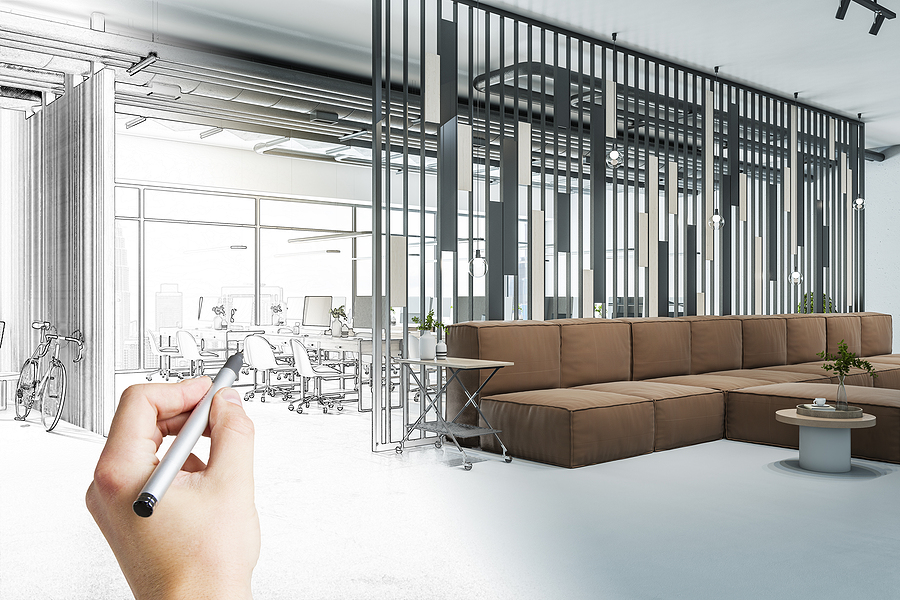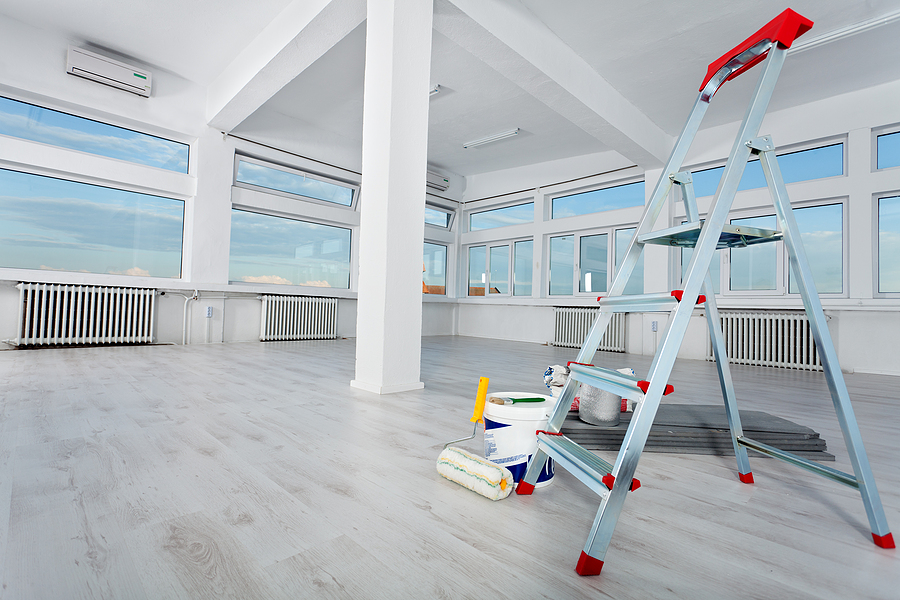Leasing a commercial space is not merely a transaction; it’s an opportunity for business expansion and customization. One of the core incentives this transaction offers is leasehold improvements, often referred to as a “build-out” or “fit-out” in the commercial real estate vernacular. When executed strategically, these improvements can significantly enhance the functionality and appeal of your business premises.
In this comprehensive guide, we’ll walk you through the complex world of commercial tenant improvements, empowering commercial tenants with the knowledge needed to turn a blank canvas into a dynamic business environment that reflects your brand and elevates your operations.

Understanding Leasehold Improvements
Leasehold improvements broadly encompass any alteration to a leased space undertaken to customize it for the specific needs of the tenant. These alterations could range from simple paint jobs to full-scale renovations, such as partitioning a large open space into private offices or adding fixtures and equipment unique to the tenant’s business.
Types of Commercial Tenant Improvements
There are various types of commercial tenant improvements, each with unique benefits:
Cosmetic enhancements: These include painting, new carpeting, and minor wall adjustments. They are usually the most straightforward and cost-effective upgrades, yet they can do wonders for the aesthetics and atmosphere of the space.
Functional improvements: Think of these as upgrades to the “engine room” of your office—things like electrical work, HVAC adjustments, and installing or modifying utilities to accommodate specialized equipment.
Structural changes: These are significant modifications that can impact the building itself, such as adding or removing walls, changing the floor plan, or altering the layout of the space. They often require more complex planning and compliance with building codes.
Benefits for Businesses
The significance of commercial leasehold improvements for businesses cannot be overstated. By tailoring your commercial space to your unique operational requirements and aesthetic goals, you create an environment that can boost employee morale, improve workflow efficiency, and enhance customer experience. Financially, these renovations can also add value to your business, improving asset base and the ability to resell your business in the future if tenant improvements are done well.
Negotiating Leasehold Improvements
Negotiating for the right to make tenant improvements during your lease term is a critical part of the leasing process. Many first-time tenants underestimate the importance of this negotiation. Here are key points to consider:
Tips for Negotiating with Landlords
Start Early: Space planning and preconstruction are key elements in the process. Begin discussions about desired renovations and repairs before the lease is finalized or use sketches and notes to convey your vision to the landlord.
Be Clear and Detailed: Develop a thorough scope of work outlining each renovation or repair you’re proposing. Clarity and detail reduce ambiguity and the potential for disputes.
Understand Landlord’s Perspective: Landlords are typically more amenable to tenant improvement plans that add value to the property. Frame your requests in terms of sustainability and long-term asset enhancement.
Cost Considerations and Budgeting
Factor in the Unknowns: Construction projects often have unforeseen costs. A good rule of thumb is to budget at least 10-15% of the construction cost for unexpected expenses.
Assess Long-Term Expenses: Consider the energy efficiency and ongoing maintenance costs of new systems and fixtures. The initial investment in a higher quality system or material could lead to long-term savings.
Consult a Construction Company Early: Commercial general contractors can provide ballpark figures based on similar past projects. Involving them early can prevent over-engineering or under-bidding on work.
Execution of Commercial Tenant Improvements
Once the negotiation phase is complete, the focus shifts to executing the renovations or remodels. This is the stage where the plans become reality, and it’s crucial to manage the process with precision.
Hiring a Commercial General Contractor and Managing Timelines
Choose a Company with Experience: Look for a construction company that specializes in commercial projects and understands the unique demands of your business sector.
Create a Realistic Timeline: Work with your construction contractor to establish a timeline that aligns with your business needs, as delays can have a significant impact on your operations and bottom line.
Communicate Openly and Often: Regular communication with your construction manager can help to identify and solve problems early, keeping the project on track.
Compliance with Regulations and Agreements
Permitting and Codes: Be aware of the local building codes and permitting processes. Failure to comply can lead to costly delays or worse—legal ramifications.
Insurance and Liabilities: Understand what your insurance covers and make sure your commercial general contracting team (and any subcontractors) have their own policies. Clarity on liability can protect all parties involved.
Protect Leaseholder Rights: Ensure that the lease clearly specifies tenants’ rights and obligations regarding improvements. This can protect you if the landlord sells the property during the lease term or if there is a dispute regarding the condition of the space at the end of the lease.
Maximizing Value from Tenant Improvements
The key to maximizing the value of commercial tenant renovations is to approach the process holistically, balancing the short-term benefits with long-term business goals.
Enhancing Functionality and Aesthetics
Design with Efficiency in Mind: Work with an architect or interior designer to ensure the layout and design of your renovations optimize the space for your business needs.
Choose Durable Materials: In high-traffic areas, durability is key. Look for materials that can withstand the demands of a commercial environment without sacrificing style.
Acoustics and Comfort: Renovations that enhance acoustic, reduce noise, and provide ergonomic workspaces can lead to a more productive and comfortable work environment.
Long-Term Benefits for the Business
Scalability: Design your improvements with potential future growth in mind. Can walls be easily moved? Are utilities accessible for future expansion?
Technology Integration: Ensure your space is designed to accommodate current and future technological needs, from data cabling to power needs for modern office equipment.
Sustainability and Energy Efficiency: The commercial world is increasingly focused on sustainability. Consider energy efficiency improvements that reduce your environmental impact and operating costs, like energy-efficient lighting and advanced building management systems.
Conclusion
The process of commercial tenant leasehold improvements is a significant opportunity for commercial tenants to mold their workspace in a way that directly supports their business objectives. By understanding the intricacies of this process—from negotiating the initial permit to the execution of the project—and focusing on the long-term value rather than short-term costs, tenants can gain a competitive edge in the commercial real estate market.
If you’re a commercial tenant preparing for a lease negotiation or improvement project, the expertise of a professional commercial general contractor can be invaluable. They not only bring construction know-how to the table but can also provide insight and advice derived from experience with similar projects in their portfolio.
Don’t leave the potential of your commercial space untapped; with the right approach to leasehold improvements, you can create a dynamic environment that sets the stage for your business to thrive. Contact BAF Corporation at 317-253-0531 to speak with an expert Indianapolis commercial general contractor about your options for tenant improvement remodeling and more. We serve clients in all industries and throughout all of Central Indiana.
Related Posts:
Essential Repairs to Do Before Listing Your Commercial Office Space on the Market
Tenant Improvements: Enhancing Your Commercial Space
Understanding Landlord-Funded Build-Out Allowances in Indiana


